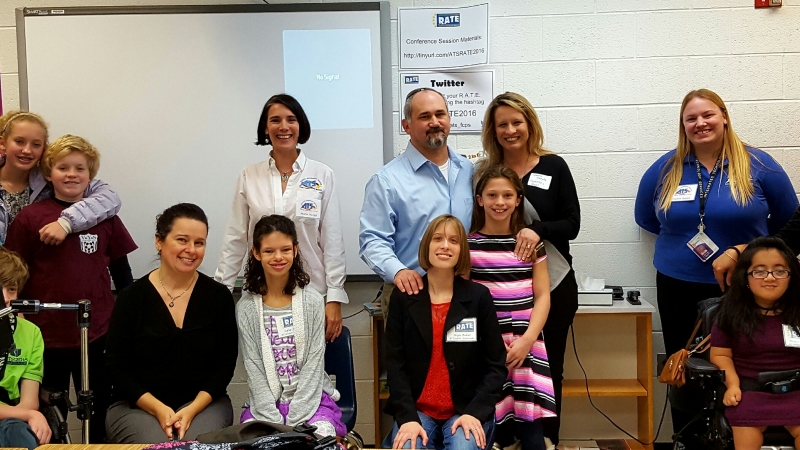
Assistive Technology Services (ATS)
Every school has an assistive technology coach who works with school teams to incorporate assistive technology for students with disabilities
Overview
Assistive Technology Services (ATS) helps students with disabilities in Fairfax County Public Schools (FCPS) by providing tools like communication devices, apps, extensions, hardware, software, and mobility devices to help them do their best in school.
The Virginia Department of Education’s Assistive Technology Tools and Strategies (VDOE VATTS) gives advice on how to choose and use assistive technology (AT) for students with disabilities. This includes planning and putting AT services into action.
ATS staff members work in collaboration with school teams to make sure students who need assistive technology get the right tools and training. This helps students access their lessons, close the achievement gap, learn important life skills, and reach their full potential.
ATS uses a Universal Design for Learning (UDL) framework to make sure technology tools are used well. It's the job of the whole school team to make sure AT tools are part of the curriculum.
Tiers of Support: Educational, Inclusive, and Assistive Technology

Tier 3: Assistive Technology (AT) Tools
Assistive Technology (AT) Tools are recommended when students need them to participate in their classes. AT coaches work with Individualized Education Plan (IEP)/504 teams to evaluate the student's needs. Coaching is ongoing, and changes to AT recommendations are made as needed. The whole team is responsible for making sure AT tools are used effectively.
Tier 2: Inclusive and Accessible Technology Tools
Other approved tools in the FCPS Digital Ecosystem can be used by all students and may be assigned individually. They help teachers adjust instruction to meet different needs and give students access to the curriculum. If a student needs them, they can be listed as accommodations by an IEP/504 team. AT coaches can help school teams understand and use these inclusive and accessible tools.
Tier 1: Educational Technology Tools
These are the core tools of the FCPS Digital Ecosystem. They help teachers adjust instruction and provide access to the curriculum. Like Tier 2 tools, they can be listed as accommodations if needed. AT coaches are available to advise school teams on how to use these educational technology tools.
Related Resources

Inclusive and Assistive Technology Tools
Technology resources for accessible classrooms. Includes tools to support executive functioning skills and to support students with reading difficulties.

Accessible Educational Materials (AEM)
A foundation of Universal Design for Learning (UDL), AEM ensures that all students can engage in equitable learning experiences.

Augmentative and Alternative Communication (AAC)
A variety of techniques and tools to help maximize a student's ability to express thoughts, wants and needs, feelings, and ideas.

AT Ambassadors Program
Showcasing the leadership, self-advocacy, and technology skills of FCPS students with disabilities.

Real Assistive Technology for Everyone (RATE) Conference
An educational technology conference focusing on the use of assistive technology to support all students, especially those with special needs.
Contact Information
Department of Special Services, Assistive Technology Services
- Jeff Sisk, Program Manager, [email protected]
- Jennifer Carr, Educational Specialist, [email protected]
- Meaghan Tracy, Integration Specialist, [email protected]
- Connect with us on X @ats_fcps